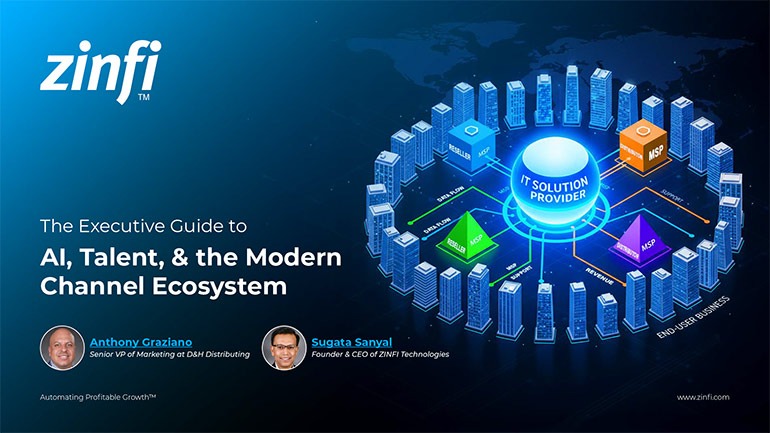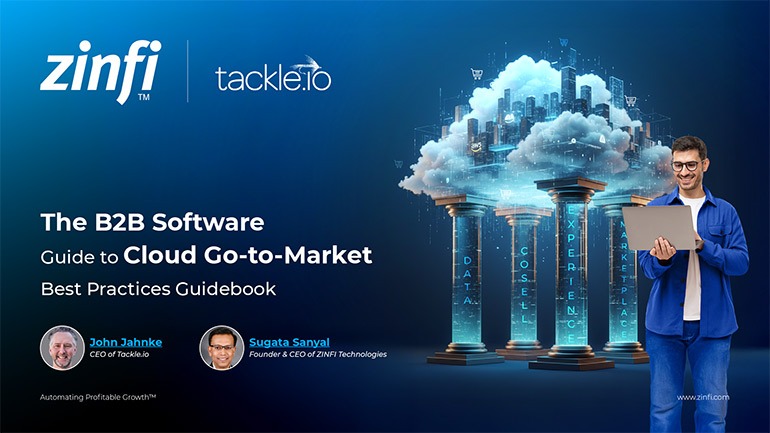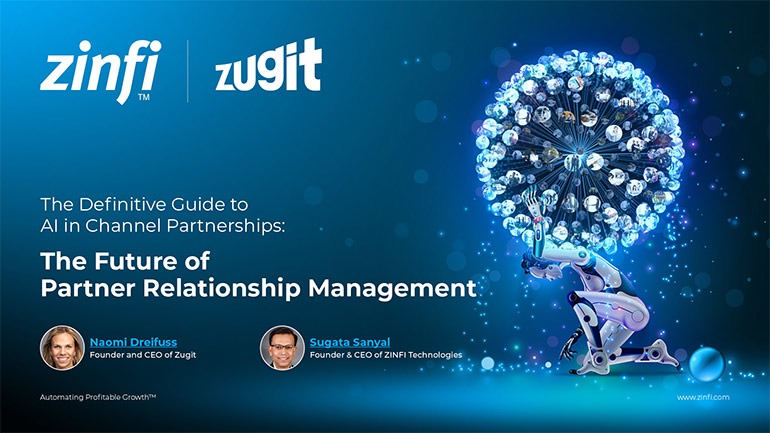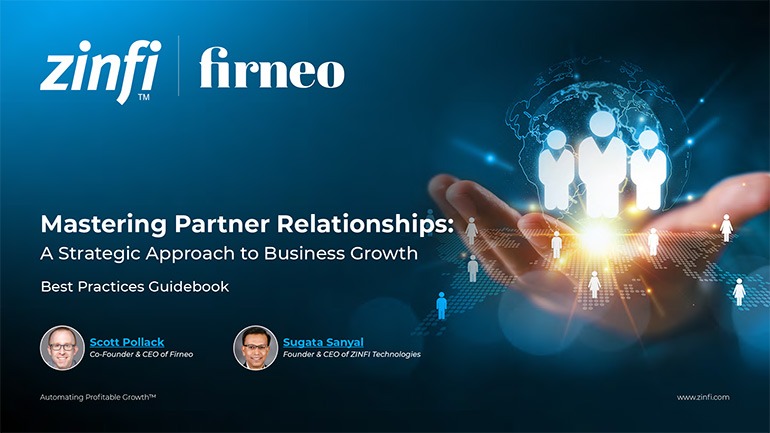Best Practices Articles

PRM Software: How to Build a Scalable Partner Office
Today, companies need to build strong ecosystems to grow faster. Building a network of trusted partners is essential. Having just a few sales or marketing people manage partners is no longer enough. Companies must create a full partner office, with clear systems and strong technology like PRM software.
A good partner office connects all parts of the company. It brings together marketing, sales, customer support, and product teams. It creates a smooth experience for partners.
A partner-first culture is very important. Every team must think about the partner’s needs first. This is not just a project. It is a new way of running the business.
This article will show you how to build a partner office that supports growth. It will explain how PRM software can support partner enablement, partner operations, and partner co-selling. Whether you are a new company or a global business, this guide will help you create a winning channel strategy.
- Building the Right Partner Office
The first step to building a partner office is understanding your customers. You need to know who they are, what they need, and how they like to buy products. After learning about your customers, you can choose the best partners to help reach them.
Not every partner will be a good fit. Some companies make the mistake of working with every partner they meet. This approach wastes time and resources. It is better to focus on specific types of partners.
You should decide which types of partners you want to work with. These may include managed service providers, value-added resellers, independent software vendors, system integrators, or telecom agents.
Once you know the types of partners you need, you can start building your team. In smaller companies, one person may handle many jobs. In larger businesses, you can create specialized roles for partner recruitment, partner enablement, partner marketing, and partner operations.
It is important to set clear goals for your partner office. You should decide how many partners you want to recruit. You should also set targets for how much revenue your partners should bring in. Track how many deals partners co-sell and how quickly they complete training.
PRM software makes it easier to track these goals. It gives you dashboards and reports that show partner progress. It helps you find areas to improve.
The partner office must also work closely with other teams. It must coordinate with marketing to run partner campaigns.
It must work with sales to support co-selling and deal registration. It must stay connected with product teams to give partners the right tools. And it must involve support teams to help partners serve customers better.
Using PRM software makes this coordination much easier. It provides a single platform where teams can share information and updates quickly.
- Growing Globally with the Right Partners
As companies grow internationally, they must learn about local markets. Every region is different. Buying habits, laws, languages, and customer needs can change from country to country. You cannot use the same strategy everywhere.
In some regions, vendors can work directly with partners. In others, vendors need local distributors to handle logistics, partner engagement, and customer support. Distributors are important in places where direct vendor support is harder to manage.
Today, companies must also consider newer types of distributors. Some distributors focus on cloud-based services. These companies offer automation tools, real-time analytics, and fast onboarding for partners. They are different from traditional distributors who often rely on older methods.
Choosing the right distribution model for each region is very important. Some markets may prefer traditional distributors. Other regions may demand digital-first distributors who offer faster and easier services.
The partner office must make sure that programs stay consistent around the world. At the same time, they must allow for local changes.
For example, partner onboarding and incentive plans should follow the same global framework. You must translate the content into local languages. Training and marketing should match local culture and customer needs.
PRM software helps manage these challenges. It allows you to run global programs while adjusting for local needs. It keeps your partner operations running smoothly, no matter where your partners are located.
Without strong coordination, partner programs can become messy. Partners might feel confused or left out. A successful global partner office keeps everything organized, clear, and consistent.
- Engaging Partners Through Influence Networks
In today’s world, sales are no longer simple. Many different people influence a purchase decision. These people might be consultants, marketing agencies, compliance experts, or independent developers. They all play a role in helping a customer choose a product.
Because of this, companies must map out influence networks. They must understand who helps drive sales. It is not enough to work only with resellers.
Partner co-selling is now very important. It means working with many different partners at once to close a deal. To do this well, you must be present where your partners are active.
Partners gather in many places. They meet on professional networking sites. They join discussions in online communities. They attend virtual webinars and industry events.
Companies must show up in these spaces. They must engage with partners, listen to their needs, and build trust.
Listening is a big part of partner engagement. Companies must collect feedback from partners often. They must use surveys, interviews, and data from PRM software to understand partner behavior.
By listening carefully, companies can improve their partner enablement strategies. They can fix problems early and offer better support.
Personalization is another key to success. Partners do not want generic emails or one-size-fits-all programs. They want training, rewards, and content that match their role and needs.
PRM software makes personalization easy. It allows companies to send the right content to the right partner at the right time. It also helps companies track engagement and adjust their strategies quickly.
A smart partner office knows how to connect deals, data, and people. It becomes a central hub for all partner activity. It moves beyond just managing partners. It creates real value for partners and customers.
- Using PRM Software to Power Partner Operations
PRM software is the heart of a modern partner office. It is not just a database or a tracking tool. It powers everything from onboarding to co-selling to partner success.
With PRM software, companies can automate onboarding tasks. New partners can quickly sign up, access training, and complete certifications without delays. This speeds up the time it takes for partners to start selling.
PRM software also makes deal registration easy. Partners can submit deals, track approvals, and see the status of their sales activities in real time. This reduces confusion and increases partner confidence.
Certification tracking is another important feature. PRM software helps companies monitor which partners are trained and ready to sell. It ensures that only qualified partners handle customer deals.
Analytics and reporting are major strengths of good PRM software. Companies can see which partners are most active, which programs are working best, and where problems are starting to appear. These insights help the partner office make better decisions.
Integration is another benefit. Good PRM software connects easily with CRM systems, marketing automation platforms, and other business tools. This makes it easy to share partner data across the company.
A partner office without PRM software will struggle to scale. Manual work slows down growth. Mistakes happen. Partners lose trust.
Investing in strong PRM software is critical for any company that wants to build a winning partner ecosystem.
Conclusion: Make Your Partner Office the Center of Growth
Building a partner office is not an extra task anymore. It is a critical part of business strategy. Companies that invest in partner operations today will lead their industries tomorrow.
The future belongs to companies that work closely with partners. They will not just sell products. They will build ecosystems. They will create stronger, deeper relationships with customers.
A strong partner office needs good people, clear processes, and powerful technology like PRM software. It must focus on partner enablement, partner co-selling, and smooth partner operations. It must support both global consistency and local flexibility. And it must listen carefully to partner feedback to keep improving.
Most of all, a partner office must have full leadership support. Partner-first thinking must be part of daily work, company goals, and leadership values.
The partner office should not sit on the sidelines. It must act as the command center for ecosystem growth. It must guide, support, and drive every part of the partner journey.
With the right mindset, structure, and PRM software, companies can build a partner office that leads them into a bright future. Now is the time to start building yours.
Best Practices Guidebook
 Modernizing Channel Marketing: AI and Ecosystem Enablement Best Practices
Modernizing Channel Marketing: AI and Ecosystem Enablement Best PracticesDownload for FREE
 The Channel’s Shift to Partner-Led With AI Best Practices
The Channel’s Shift to Partner-Led With AI Best PracticesDownload for FREE
 Hyperscalers, ISVs, and AI: Shaping the Future of B2B Software Distribution
Hyperscalers, ISVs, and AI: Shaping the Future of B2B Software DistributionDownload for FREE
 Definitive Guide to a Partner Ecosystem-First Sales Strategy
Definitive Guide to a Partner Ecosystem-First Sales StrategyDownload for FREE
 The Partner-Led Digital and AI Transformation Best Practices
The Partner-Led Digital and AI Transformation Best PracticesDownload for FREE
 Startup Talent Recruitment: Hiring Missionaries, Not Mercenaries
Startup Talent Recruitment: Hiring Missionaries, Not MercenariesDownload for FREE
 The Future of Partner Relationship Management with AI in Partnerships
The Future of Partner Relationship Management with AI in PartnershipsDownload for FREE
 Cybersecurity for the 99%: Strategies from the Frontline
Cybersecurity for the 99%: Strategies from the FrontlineDownload for FREE
 Mastering Partner Relationships: A Strategic Approach to Business Growth
Mastering Partner Relationships: A Strategic Approach to Business GrowthDownload for FREE
 Mastering Partner Relationship Management: Keys to SaaS Channel Success
Mastering Partner Relationship Management: Keys to SaaS Channel SuccessDownload for FREE
 Navigating the AI Revolution: Guide for Partners in the Microsoft Ecosystem
Navigating the AI Revolution: Guide for Partners in the Microsoft EcosystemDownload for FREE
 Mastering the Modern Buyers Journey: Sales Leader’s Guide to AI & Engagement
Mastering the Modern Buyers Journey: Sales Leader’s Guide to AI & EngagementDownload for FREE










